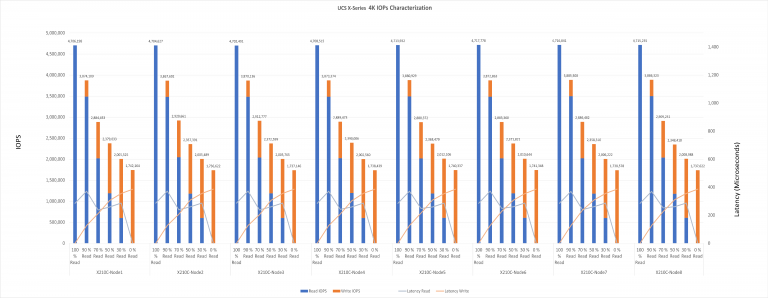I know what you’re thinking. Bill, it’s Tuesday, your next blog is supposed to be tomorrow. You’re correct. But when Tushar reached out to me with this amazing performance story on Cisco UCS X-Series, I didn’t think the news could wait.
Let me introduce Tushar Patel, Principal Engineer, to give you all the details in his own words. I’ll be back tomorrow with a blog on X-Series & applications.
By Tushar Patel
Adapting, Evolving, Anticipating
Modern enterprise computing workloads are adapting to a hyper-distributed and hyper-connected world where apps, devices, and data can be accessed anywhere and anytime. In turn, advancements in application architectures made it possible to deliver workloads in a variety of ways including as microservices wrapped in containers and virtual machines.
As a result, computing system architecture and design are also evolving accordingly to be able to support the exponential growth of these workloads efficiently and effectively. Today’s computing systems must offer balance across key system requirements including CPU/memory utilization, power/cooling, and data latency/capacity.
Cisco has been ahead of these significant market and technology shifts with the introduction of the Cisco UCS X-Series Modular System that is engineered to simplify IT and enable IT teams deliver infrastructure innovations at the speed of software. The X-Series is a new family of next-generation computing systems that:
- is powered by Cisco Intersight, making it simple to deploy and manage at scale
- is architected to be flexible to support any workload with innovations in delivering high drive densities, massive network bandwidth, and innovative UCS X-Fabric Technology for GPUs,
- is future-ready to enable seamless adoption of upcoming technologies (PCIe Gen 5, CXL for memory disaggregation, etc.)
Recently, Cisco engineers achieved a milestone with the UCS X-Series in terms of raw storage and data performance by sustaining an aggregate of at least 35 million input/output operations per second (or IOPS) in support of enterprise workloads that use local drives. IOPS are an important hard drive performance measure that shows how fast storage media can read and write commands per second.
Testing Parameters and Observations
Cisco conducted the performance test using a Cisco UCS X210c M6 Compute Node equipped with six Intel® non-volatile memory express (NVMe) solid state disk drives, generating 4.7 million IOPS per node. A fully populated UCS X9508 Chassis can support eight nodes in a single 7-RU chassis (approximately 1-foot tall) for an aggregate performance of at least 35 million IOPS per system.
This demonstrated performance would easily exceed disk capacity and performance requirements for majority of today’s enterprise workloads. Further, by achieving this performance in a single, compact form-factor chassis, the test showed how X-Series customers can run their workloads locally on the host to reduce latency as well as power and cooling requirements.
Cisco designed for the test to simulate real-world application behavior and customer use cases supporting demanding enterprise workloads. Cisco equipped the UCS X210c M6 node with 3rd Gen Intel® Xeon® Scalable Processors and with Intel SSD D7-P5600 NVMe drives, 48 drives total across eight nodes.
The test team relied on FIO, a popular open-source I/O-profiling and characterization tool for Linux computing systems that simulated variable workloads running over sustained intervals ranging from 30 minutes to four hours.

Here are the key observations that the test revealed:
- There was near identical I/O behavior across all eight nodes.
- Each node generated approximately 4.7 million sustained IOPs at 100 percent reads with total of 37 million+ IOPS at an average of 500 microseconds of latency per node.
- The test generated very low (system) CPU utilization required for the I/O load, leaving plenty of CPU cycles available for workloads to process data.
Conclusions
Cisco designed the UCS X-Series as a modular and future-proof computing system that can support traditional and modern applications and workloads efficiently and effectively across on-premises, private cloud, and hybrid cloud enterprises. The IOPS test results demonstrated that the UCS X-Series can deliver the necessary performance that applications need today with ample room to support future workload growth.
The test also reinforced Cisco’s firm commitment to deliver continual innovation across its computing portfolio to redefine how servers must operate in the hybrid cloud era. For example, Cisco plans to apply these UCS X-Series capabilities for other use cases such as bringing unprecedented levels of performance and operations for converged and hyperconverged infrastructure with our eco-system partners.
For more information, we will post additional technical details of the UCS X210c IOPS test on the Cisco UCS X-Series landing page soon.
Cool can’t wait to put this in a Cisco UCS rack…oh wait